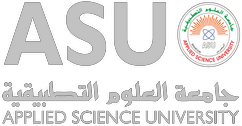Vision:
The vision of our Academic Staff Development unit is to create a community of faculty members who are committed to ongoing professional growth and development. We aim to foster a culture of excellence in teaching/ learning, research, and service by providing our faculty members with the tools, resources, and training they need to achieve their professional goals.
Our vision is to empower our faculty members to be leaders in their respective fields and to make a significant impact in their disciplines and communities. We believe that a thriving faculty community is essential to the success of our institution, and we are committed to supporting our faculty members in their pursuit of excellence.
We envision a future where our faculty members are engaged in meaningful professional development opportunities, and are equipped with the skills, knowledge, and resources needed to adapt to the changing needs of higher education. We strive to create a supportive and inclusive environment that values diversity, equity, and inclusion, and where all faculty members feel supported and encouraged to achieve their full potential
Mission :
The mission of our Academic Staff Development Unit is to enhance the professional growth and development of our Faculty Members through a range of programmes and services designed to support excellence in teaching/ learning, research, and service.
Our mission is to provide Faculty Members with the tools, resources, and training they need to stay current in their respective fields, foster a culture of innovation and continuous improvement in their teaching/ learning and research, and contribute to the success of our institution.
We are committed to creating a community of Faculty Members who are engaged in meaningful professional development opportunities and feel supported and empowered to achieve their full potential. We strive to promote a culture of collaboration, communication, and inclusivity, where Faculty Members from all specialities and backgrounds can come together to share knowledge, opinions, and best practices.
How do we achieve our goals?
1. Through collaboration with colleagues, we develop and refine academic practices and processes. This collaborative approach fosters our own professional growth, supports the development of our colleagues and their students, and ultimately contributes to the advancement of ASU as an institution and higher education as a whole.
2. We actively participate in and contribute to the development of learning communities. These communities can take various forms, such as Pedagogical Interest Groups and the UK Advance HE (Higher Education Academy).
3. Recognizing that both student and staff learning are continuous processes, we actively engage in the scholarship of teaching and learning. This includes disseminating valuable research in the field, as well as conducting our own investigations, all aimed at enhancing the learning experiences of our entire academic community.
4. Scholarship is the foundation of our informed, analytical, and critical approach to learning. It allows us to explore competing theories, policies, models, and research, fostering a culture of inquiry that challenges and refines our practices. Ethical practice is the cornerstone of everything we do. It involves valuing the contributions of all university members, acknowledging power dynamics within work relationships, and ensuring that power is not misused. Confidentiality, sustainability, trust, and mutual respect are all essential elements of ethical conduct.
5. Working effectively with diversity and promoting inclusivity We seek to ensure that each learner, and each colleague, has, as far as possible, the same or appropriately equivalent opportunity to learn, develop and succeed. We learn from and are enriched by this diversity in the staff and student body.
6. Through continuous reflection on our professional practice, we critically examine our current methods. We identify what works well, what areas need improvement, and the rationale behind potential changes. This reflection ensures we align with both internal and external priorities. By considering both short-term and long-term goals, we can develop effective strategies for ongoing improvement.
